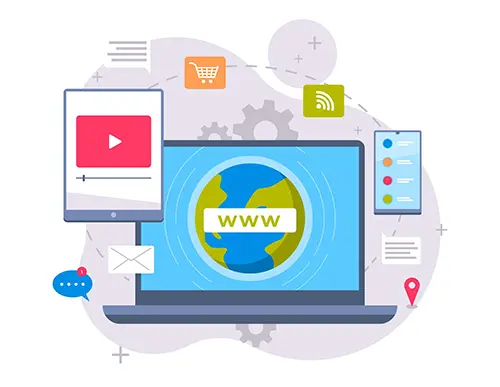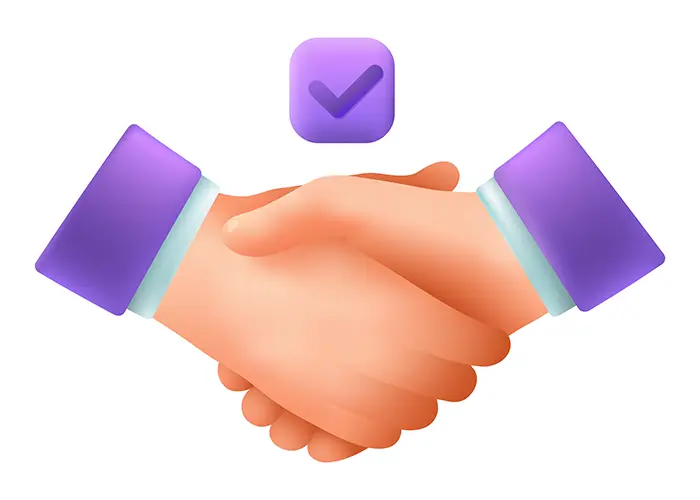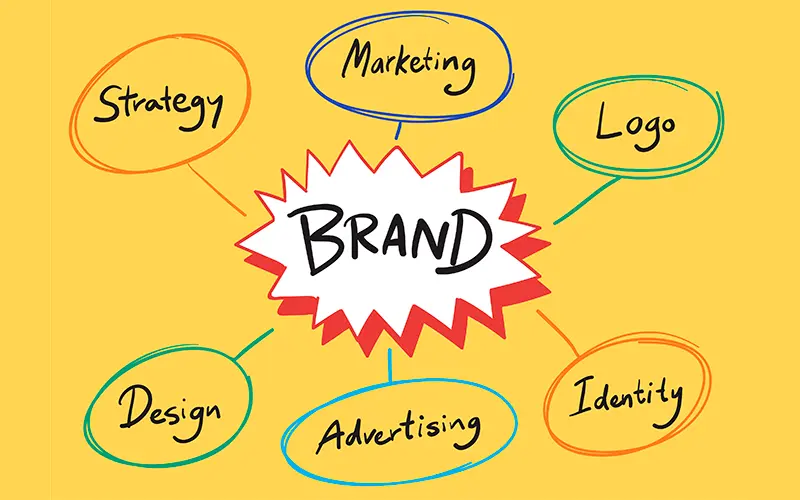If you've ever used a social media platform, you've probably seen shortened links. They became popular in the early days of Twitter, when there was a 140-character limit.
This limit made it difficult to tweet a full sentence, let alone one with a full link attached. But Twitter was a great platform for sharing content, so a solution had to be found. The solution was shortened URLs.
Soon after, the practice of making links short and sweet spread to other platforms like Facebook, LinkedIn, and others, and nowadays, full links are a rarity.
Branded links are not only shorter, they're also much nicer to look at. Take the link below as an example
https://m.post.naver.com/viewer/postView.naver?volumeNo=38111815&memberNo=6289885&vType=VERTICAL
The link above is basically ugly and no one likes it, but if you shorten the same link using Vivoldi, it looks like this
It's much shorter and not as ugly, but you have no idea which link it is. Better yet, here's the branded shortened version:
It looks good, you can type in the link ID yourself, and it's easy to remember because the link contains words.
You'll get more clicks because users will know what the link is before they click on it and visit your website.
Branded links use the words "skin care daily" with your brand - your company name, brand name, blog name, YouTube channel name, etc. to make it easy for users to recognize your brand.
If you go further and register your own domain with Vivoldi, you can also easily create a short URL with your domain instead of vvd.bz, vvd.im, etc.
This way you have a complete branded link, not a half-baked one.
Example: mydomain.com/coffee-as-a-service
Branded links are essential if you plan to use the shortened short link for marketing purposes.
Generic URLs contain the name of the URL shortening tool you use, which dilutes your brand image and can be confusing to users.
That's why we're going to take a look at how branded links can help you achieve greater success with URL shortening.
How do I create branded links?
It's pretty simple. After logging in to Vivoldi, when creating a link on the dashboard page, simply check the "Branded Link" option and enter the words you want.

It's very simple to create, but there is a catch. If someone else has used the word you want first, it will be duplicated, so you'll need to enter a word that no one else has used. This means that you'll need to be quicker than others to create your branded link with the word you need.
However, if you register and use your own domain with Vivoldi, you can use any word you want because Vivoldi's primary domain is different from yours.
So why should I use branded shortened links?
The biggest advantage of using branded shortened links is that you get all the benefits of link shortening without losing any of your brand power. It's also nice to know that you can increase the visibility of your business if someone wants to reshare your link.

Anyone can shorten links. Platforms like Twitter and LinkedIn automatically shorten links in posts if they exceed a certain number of characters, so it's practically unavoidable now.
So, if link shortening is an unavoidable reality, you can get creative and create branded short links, which are links with a customized URL. To create them, you can use a dedicated root or subdomain and edit the ID of the link. For deeper understanding, you can break down these terms.
.
A subdomain is when you add a prefix to an existing domain. For example, the market.example.com link we used earlier is an example of a link using a subdomain because it is just adding a prefix to an existing domain. The disadvantage of subdomains is that they typically appear longer than the root domain.
.
A root domain (example.com) is a separate, dedicated domain that you purchase and set up for the purpose of shortening links.
When you register a root domain in Vivoldi, you can set up up to 10 subdomains.
.
Be specific with domains for content types
Vivoldi's URL shortener can accommodate multiple domains and subdomains, which means you can use different URL schemes for different types of content you share.

Many companies use branded URLs like social.example.com/short-url. That's fine, but it's not very informative. If the URL is being shared, it's already in a social context.
The word "social" doesn't add any information that isn't already known. When using a subdomain in a short URL, use words that describe the content you're sharing while also informing users. Here are some examples
- news.example.com/link-id
- blog.example.com/link-id
- fun.example.com/link-id
- link.example.com/link-id
- jejudo.example.com/link-id
How specificity helps metrics
URL shorteners provide metrics about your content. It tells you how many people clicked on each short URL you shared, so you can see which content is getting the most engagement and which content is underperforming. You want to share more of the content that people value and less of the content that they don't.

Not all clicks are created equal: People who create and share content have several goals:
- To deliver value to consumers and to establish a brand presence.
- To position your company or yourself as an expert in your market, an authoritative source.
- To grow your consumer audience.
It's smart to use unique URL patterns for the different types of content you share. Engagement for each type of content has different implications.
To better understand what it means, let us explain our choices.
Blogs
Every piece of content you create is created with the intention of delivering value to your consumers. The engagement on a particular piece of content tells you whether it was useful and whether it solved a business problem. If your content isn't solving a business problem, you need to change the type of content you're creating.
Fun
Fun content can help drive engagement and showcase your personality, but it doesn't add to your domain expertise or credibility. Funny posts don't solve consumers' business problems.
News
Draw attention to announcements and press releases that your company issues and inform customers about changes to the products and services that your company offers.
You can also provide links to articles in which your company is featured or quoted.
News helps to establish your domain expertise and increase your credibility. However, it doesn't solve your customers' problems; it's more of an endorsement that provides proof that your company is competent and that the advice you provide can be trusted.
Link
We don't monopolize useful information. When we find useful information, we share it.
Engagement on third-party content is informative; it allows you to test out topic ideas without having to write a full article or in-depth guide. High engagement on third-party content is a sign that your company can move forward with the relevant content you have in mind. In other words, they use Links to find existing value and blogs to create new value.
You might be wondering why we don't get more granular about content than links. That's a good question.
The short answer is that we reach diminishing returns pretty quickly. Technical articles can also be how-to guides. Similarly, SEO or marketing articles can also be how-to or technical articles. A single article can span multiple content categories. Narrowly categorizing your content doesn't help consumers understand the content you're sharing.
Jejudo (location)
You don't need to have an office on Jeju Island to use Jejudo, but it's an example of how to share information about what's happening in a city or town. If you run a local business, location-specific URLs are a great way to cross-promote community activities and events. This helps the public good and allows you to reach out to consumers outside of your domain to familiarize them with your content. While it doesn't directly increase your credibility within your domain, it can passively increase your credibility within a geographic area.
Generic links dilute your brand image
The most obvious reason to use branded URLs is that generic shortened URLs tend to dilute your brand image.
This is because generic URLs contain the name or some version of the URL shortening tool.
This can be confusing to users and can look out of place in the middle of all the content about your brand.
If all your content is about your brand, shouldn't your shortened links be about your brand too?
That's why it's important that the shortened links you create also represent your brand identity in some way. This will strengthen your brand cohesion and have a much greater impact on your target audience. Brand engagement is much better.
Your target audience is more likely to remember your brand when they encounter content with branded links than generic shortened links.
Branded links increase trust

Another reason branded links are preferred over generic links is that they increase consumer trust. They're an important tool for solidifying your branding.
Generic shortened links look just like any other link. There's nothing to distinguish them from other generic shortened links, so users have no way of knowing what the link is about or where it leads.
Branded links solve this problem.
The way you structure a branded link makes it clear where the page is coming from and what it contains. This is why they're great for influencer marketing.
This instills a sense of trust in your readers, which makes them much more likely to click on branded links than shortened links in general.
Because more people click on branded links, you'll see more customers visit your website and interact with your content.
It goes without saying that when more people trust your link, more people will click on it, and the result is that you'll see more of them.
Increased click-through rates
Branded links increase click-through rates by as much as 34%.
So if you want to increase your traffic and get your brand in front of more people to increase sales, then it's worth getting a custom domain. That's because you'll need a domain to create all the branded links for your marketing campaigns.
Trust us when we say that once you start utilizing branded links in your promotional campaigns, you'll never use regular shortened links again.
What should I look for in a link shortening platform?
Here's a quick checklist of things to look for when choosing a link shortening platform:
Can I add my own domain? Some link shortening services are free and easy to use, but they don't offer a custom domain option, which means you can't brand your links, which is a shame.
Below are some things to look for when choosing a URL shortening platform:
- How much does it cost? Remember, free is not the best option, so a free link shortening service may not allow you to add your own domain or come with a lot of restrictions and may even disappear a year from now. Free is not always a good thing, especially since it can be used for a lot of spam.
- Can I add more than one domain? Sometimes it's nice to have options, for example, to use different subdomains depending on the content of the link. Check to see if you can add subdomains through link shortening.
- Can I edit the ID of a link? Yes. Editing link IDs is a great way to create easily recognizable, branded links. This is especially useful if, for example, a user wants to re-enter the link on a different device or print the link. There's no easier way to create a great-looking branded link than by editing the link ID.
- Can I edit 404 page redirects? Make sure you check this out! Assuming you've written a blog post for marketing and promotion, if you've entered the wrong link ID for a shortened URL, the link should be broken and take you to your website, not to the linking platform's website.
This means that you're not blocking visitors from coming in because of a mistake.
- Can I get customer support if I need it? If you've gotten this far in the checklist and found a good option, it's time to find out if you can get help when you have trouble using the service. Many free shortened link platforms make it difficult to get help when you're unsure or having trouble using the service. Customer support is worth paying for.
- What are the additional options? When you shorten links, you get a variety of additional features. For example, we recommend targeting based on what page the link is clicked from, or having a variety of link options beyond URL links, such as QR codes, memo links, cardboard links, etc. It's also important to be able to provide and view stats on link clicks in some detail.
Click here to watch a guide video on how to create and use branded links in Vivoldi.
Thank you.



